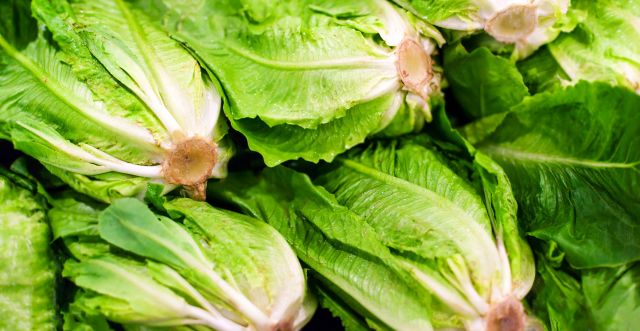Another nationwide outbreak of E. coli infection has prompted recalls of more than 75,000 pounds of romaine lettuce and other salad mixes that contain romaine—just in time for Thanksgiving.
The U.S. Department of Agriculture announced the first recall on November 21, 2019 and issued a second recall the following day, warning that romaine lettuce grown in the Salinas, California, growing region is the likely source of the outbreak and should be discarded and not eaten.
“We are concerned about the potential for contaminated lettuce on store shelves and in people’s refrigerators,” says Robert Tauxe, MD, Director of the CDC Division of Foodborne, Waterborne, and Environmental Diseases. “Heading into the Thanksgiving holiday, it is critically important to avoid buying or eating romaine lettuce from the Salinas growing area so you can protect yourself and your family.”
As of November 26, a total of 67 people from 19 states were infected with a dangerous strain of E. coli, known as O157:H7, according to the Centers for Disease Control and Prevention (CDC). This is the same strain of the bacteria linked to tainted leafy greens in 2017 and to romaine lettuce in 2018.
The CDC also reports that 39 people have been hospitalized and six developed a serious complication stemming from E. coli infection called hemolytic uremic syndrome (HUS)—a type of kidney failure associated with the infection. No deaths have been reported.
How to prevent infection
Federal health officials have advised consumers not to eat any form of romaine lettuce—including whole heads, hearts, bags and boxes of pre-cut lettuce and salad mixes that contain romaine or baby romaine—with a label indicating that it’s from Salinas, California. Restaurants and grocery stores have also been directed not to serve or sell any romaine harvested in this growing region.
Any unlabeled romaine products from an unknown source should also not be eaten, served or sold.
If you have any of form of romaine in your refrigerator with a label indicating that it’s from the Salinas, California growing region, you should immediately throw it away—even if it was partially eaten and did not lead to illness. If you’re unsure if the lettuce you have is romaine or if it’s not labeled with a growing region, don’t eat it and throw it away.
It’s also important to wash and sanitize any drawers or shelves in your refrigerator where romaine was stored.
The U.S. Food and Drug Administration points out, however, that romaine lettuce harvested outside of the Salinas growing region or labelled as “indoor grown” has not been tied to the current outbreak investigation. There is no warning against using romaine from these sources.
Recognize the signs of infection
The strain of E. coli O157:H7 bacteria involved in this and other recent outbreaks can produce a dangerous toxin in the body called Shiga.
Keep in mind, there’s a lag time between when people are sickened, when they report those illnesses and when the CDC reports confirmed cases. The agency points out that it takes between two and three weeks from the time a person becomes sick with E. coli to when that illness is reported to the government.
Warning signs of the infection usually begin three to four days after exposure with mild stomach pain or diarrhea. As it progresses, symptoms may include severe stomach cramps, diarrhea with blood, vomiting and a low fever.
The CDC advises consumers to be on the lookout for signs of exposure to E. coli O157:H7. The FDA also urges consumers with symptoms of an infection to contact their healthcare providers.
Those who believe they may be affected should write down what they ate in the week before they started to get sick. This will help inform health officials about the source and the scope of the outbreak.
How is the infection treated?
If you have an E. coli O157:H7 infection, it’s unlikely you will be treated with antibiotics. These drugs are used to treat many bacterial infections, but they are typically not recommended as a treatment for this illness since the risks may outweigh any possible benefits.
Some studies have also suggested that giving patients with E. coli O157:H7 infection antibiotics could increase their risk for HUS.
Most people get better on their own within five to seven days, but the following red flags require immediate medical attention:
- Diarrhea that lasts for more than three days or comes with a high fever
- Bloody stool
- Excessive vomiting that leads to dehydration
Five to 10 percent of people with Shiga toxin-producing E. coli develop HUS. People younger than 5 and older than 65 as well as those with compromised immune systems are most susceptible. If you experience signs of this complication—decreased frequency of urination, extreme tiredness or loss of color in the cheeks or inner eyelids—seek medical help right away.
You can track the latest outbreak information at cdc.gov and fda.gov.







